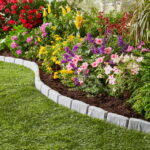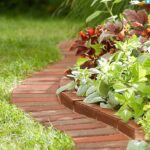Garden borders are essential elements in landscaping, providing structure and defining boundaries within a garden. They not only enhance the overall appearance of a garden but also serve practical purposes such as preventing soil erosion, containing plants, and keeping out unwanted pests. There are a variety of materials that can be used to create garden borders, each offering its own unique aesthetic and functional benefits.
One popular option for garden borders is using bricks or stones. These materials provide a classic and timeless look that can complement any garden style. Bricks and stones are durable and can withstand the elements, making them a long-lasting choice for bordering flower beds, pathways, or vegetable gardens. They can be arranged in a variety of patterns, from simple straight lines to intricate designs, allowing for creative expression in the garden design.
Another common material for garden borders is wood. Wood borders are versatile and can be easily customized to fit any garden shape or size. They can be stained or painted to match the existing garden décor, or left natural for a more rustic look. Wood borders are also relatively inexpensive and easy to install, making them a popular choice for DIY gardeners looking to add a decorative touch to their outdoor space.
For a more contemporary look, metal garden borders can be a stylish choice. Metal borders are sleek and modern, adding a touch of sophistication to a garden design. They are also durable and low-maintenance, requiring little upkeep over time. Metal borders can be used to create clean lines and sharp edges in a garden, giving it a polished and professional finish.
In addition to traditional materials, there are also creative alternatives for garden borders, such as recycled materials or plants themselves. Using recycled items like old tires, bottles, or pallets can add a unique and eco-friendly touch to a garden. Plant borders, made from low-growing plants like lavender, thyme, or boxwood, can create a living edge that adds texture and color to the garden while helping to define its boundaries.
No matter what material is chosen, garden borders play a crucial role in shaping the overall look and feel of a garden. They provide structure, define boundaries, and add visual interest to the outdoor space. Whether using classic materials like bricks and stones, modern options like metal, or creative alternatives like recycled items or plants, garden borders are a versatile and valuable element in landscaping design.
















